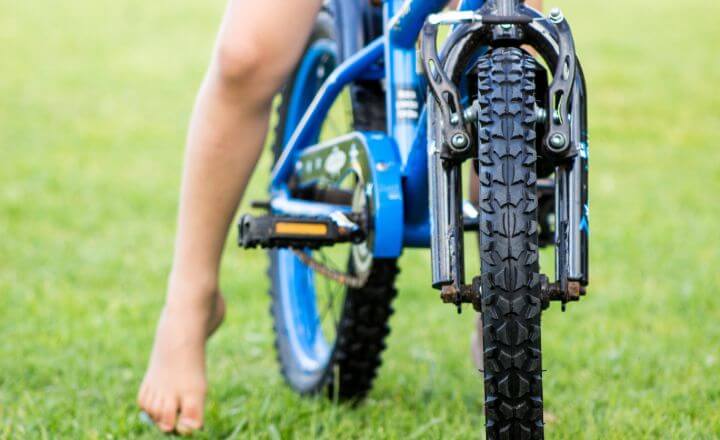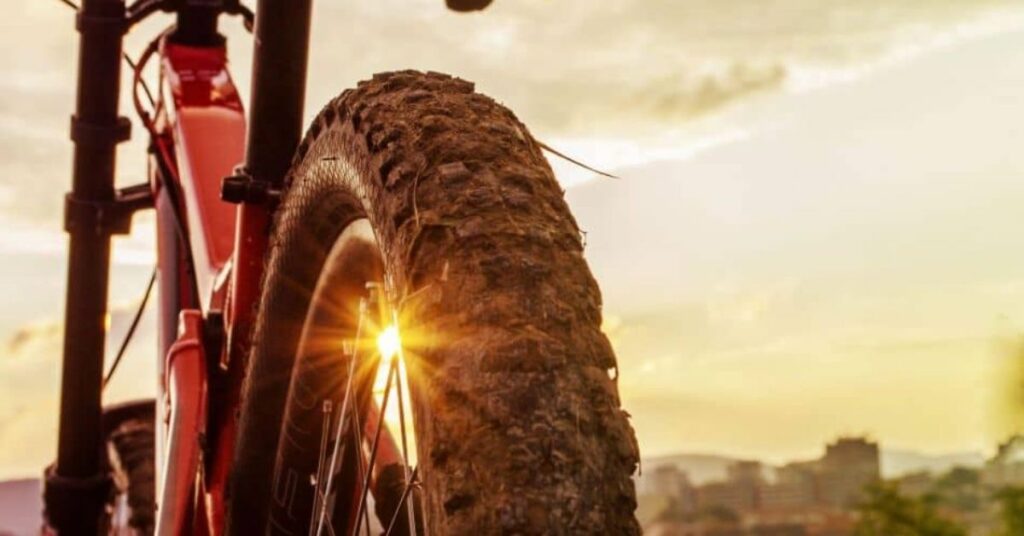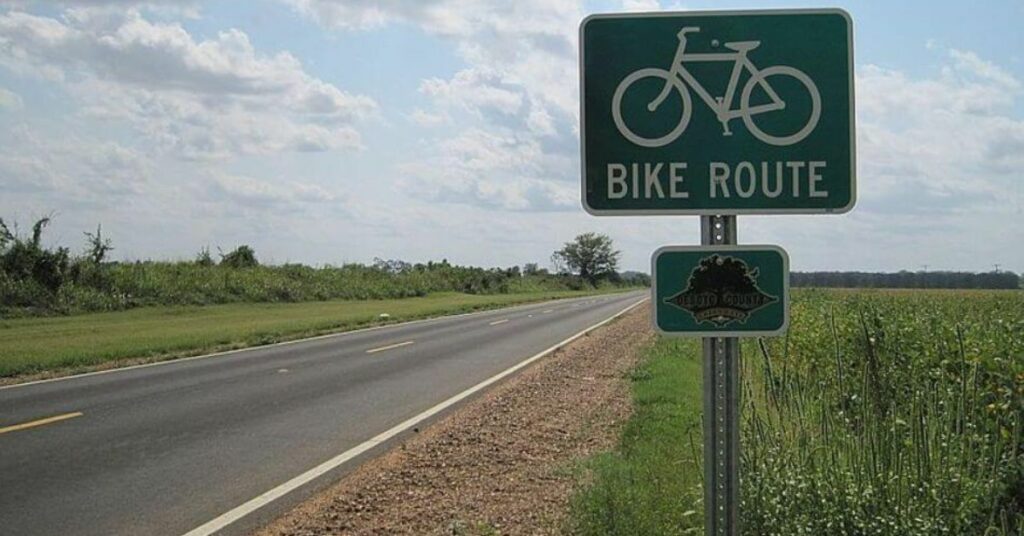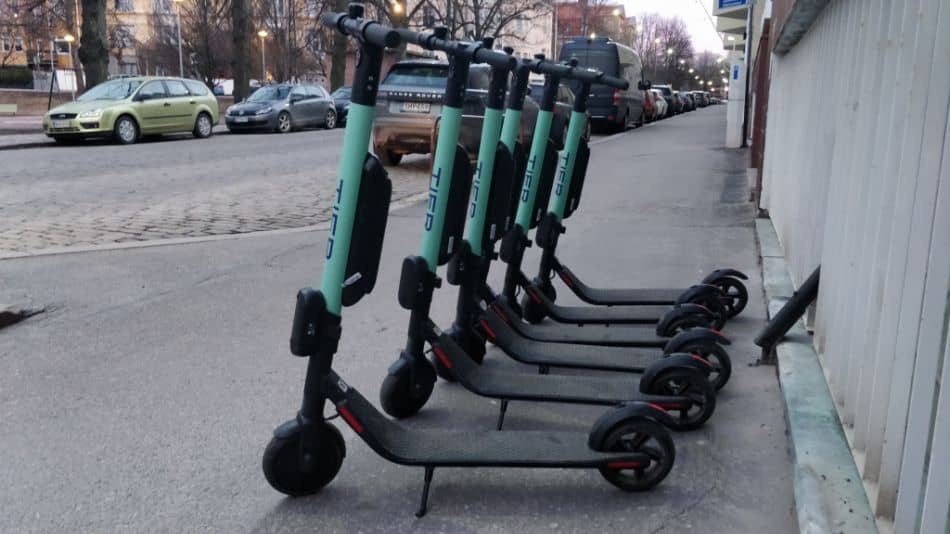(Last updated on March 6th, 2023)
Cycling is an amazing sport. Many people are now turning to the the best bike for their fitness fix and to challenge themselves. When you start cycling, it is easy to be curious about how quickly you should be riding. We often get asked the question, how long does it take to bike a mile?
It’s a very complicated question, and many factors will affect cycling speed. In this article, we’ll be telling you everything you need to know. From what speed you should be doing on different types of bikes, on different terrains, and even up hills.
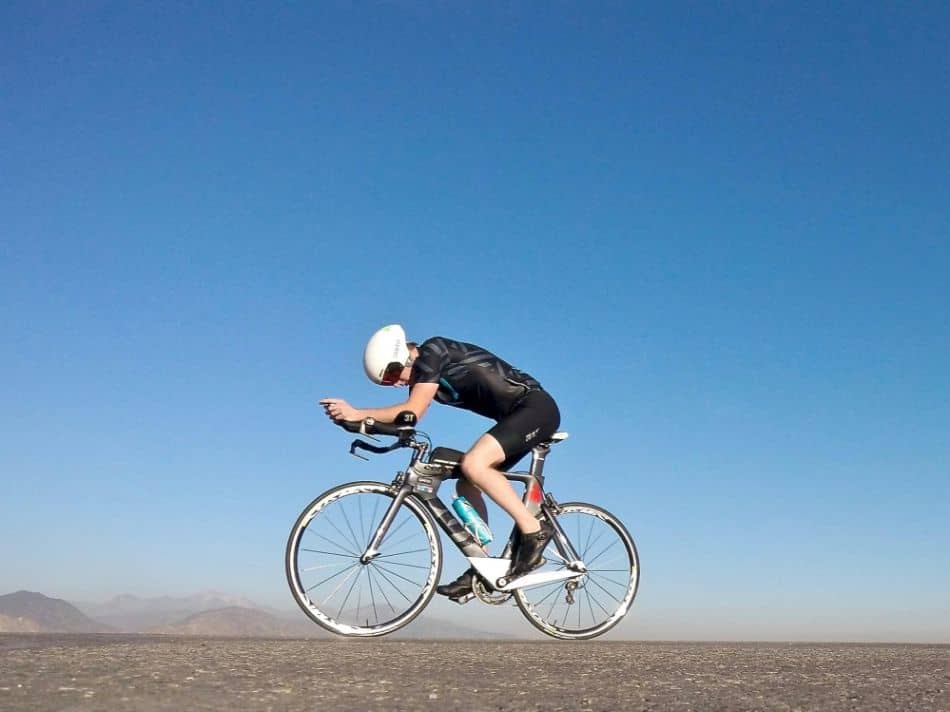
How Long Does It Take to Bike a Mile?
Most people cycle a mile between 4 to 5 minutes, with the time varying depending on various factors.
We will discuss the factors below.
Understanding a Mile
The first thing important to understand is how far a mile is, as the measurement is only used in some countries. A mile is 1760 yards or 1.609 kilometres. For many people, it will equate to 2000 steps in daily life. So when people say they have a 10,000-step daily target, they are roughly covering 5 miles per day.
The Factors That Affect a Mile Bike Time
As mentioned before, a huge amount of factors affect how long it will take you to ride a mile. It is literally going to be different for everyone. Here are the main factors;
Your Fitness and You
Your own fitness play a huge part in how quickly you will ride a bike. It will likely be quick if you are younger and spend a lot of time cycling. It will be slower if you’re older and don’t often cycle. The fitter you are, typically the better you will be at cycling, as it is a cardiovascular exercise.
Undoubtedly, fitness and who you are will be the biggest difference overall. This is why training is the best way to get faster on a bike. Later in this article, we’ll discuss some ways to get faster riding your bike.
The Bike
The bike will make a big difference to your time too. We’re speaking more about the type of bike, such as mountain, gravel, road, or even hybrid. Although they are suited to different types of riding, they will all have different abilities. For example, here’s what we would expect these different types of bikes to cover in an hour with an average rider on a flat tarmac road;
| Type of Bike | MPH estimated |
| Road Bike | 17mph |
| Gravel Bike | 15mph |
| Mountain Bike | 14mph |
| Hybrid Bike | 14mph |
| Fat Bike | 13mph |
Terrain
Next, we have terrain. You will go fast if you ride on a smooth road with a fast road bike. If you’re riding on a dusty trail on your gravel bike, you will be going slightly slower due to the extra resilience of the path. Finally, you will be very slow if you are on a mountain bike going through thick mud.
Considering the terrain is important, as it makes a huge difference. Although your bike may be equipped to ride on it, you will still see a huge difference in how quickly you can cover the distance. Professional road cyclists on a smooth road will be around 24 mph average speed. While riding mixed terrain, the same riders on gravel bikes will be 20 mph.
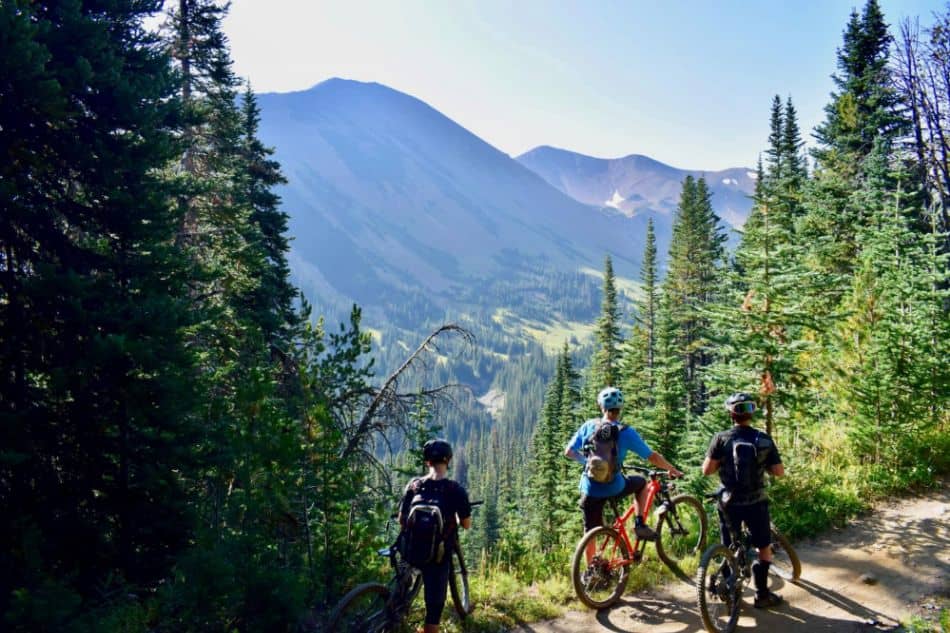
Ascending or Descending
Then we have the climbing profile. If the mile you’re riding is all uphill, it will take time. The taller the gradient, the harder it will be to get over it. On a gradient of 3%, you can expect to lose around 5 mph in your average speed. If you struggle with climbing hills, you can master the skill in a few simple steps.
If you’re going downhill, it’s another story. You will find yourself riding that mile much faster. The momentum of the bike and your weight helping you go faster makes a big difference. With a gradient of minus 3%, you will gain around 5 mph or more.
Weather and Temperature
Although it may not seem like much, wind and rain heavily affects cycling speed. If you are riding into a block headwind of 15mph and the rain is hitting you hard, you can lose around 4 mph. The same principle works the other way. A roaring tailwind will make you up to 4 mph faster.
Temperature is another factor many people don’t take into account. In the winter, when there are colder temperatures, you cycle slower as the air is thicker, and muscles don’t work as efficiently when cold. In summer, you cut through the air quicker when the weather is warmer. Not just your muscles but even your bike tires have less rolling resistance.
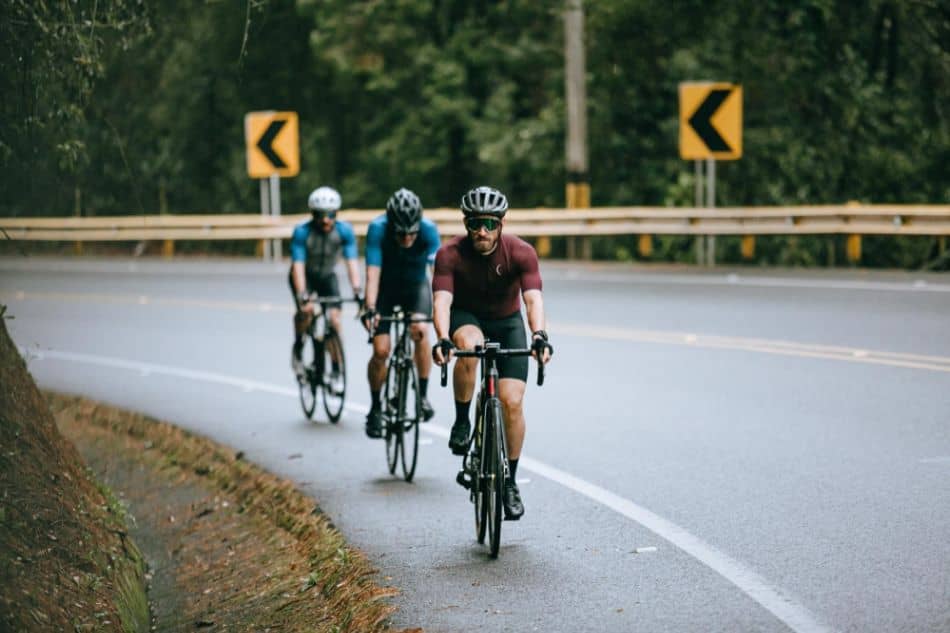
How Quickly Should I Ride a Mile?
Considering all the above, we have put some rough estimates together for you. As I have mentioned before, so many factors are involved in this. We recommend taking it with a pinch of salt. Here we have put together a small chart for you;
| Road Bike | Mountain Bike | Hybrid Bike | |
| Road Flat Terrain | 3.30 | 4.10 | 4.20 |
| Road Hilly Terrain | 4.00 | 4.40 | 4.50 |
| Off Road Flat Terrain | 4.40 | 4.40 | 5.20 |
| Off Road Hilly Terrain | 5.10 | 5.10 | 6.00 |
| Mixed Flat Terrain | 4.20 | 4.20 | 4.50 |
| Mixed Hilly Terrain | 4.50 | 4.50 | 5.00 |
Here we have taken a road, mountain, and hybrid bike and roughly estimated how low we would expect them to cover a mile with an average rider. There’s a clear showing here of how bikes handle different terrains.
How Do I Track It Accurately?
Tracking speed and distance can be very challenging. It’s difficult to plot a mile route and grab the stopwatch while riding. There are a few easier ways we can highly recommend.
GPS Tracker
The first way to go is by using a GPS Tracker. Many companies like Wahoo, Garmin, and Hammerhead make bike trackers. These accurately tell you how far you have travelled and how quickly you did the distance. They can also be linked to heart rate monitors and power meters if you like cycling with data.
Speed Sensor
Another way you can go is by using a cycling speed sensor. Many companies make these, such as Cateye and Garmin. You install these on your bike with a magnet to your wheel, which will tell you how quickly you’re travelling. You can use these to time yourself for a mile.
Smart Phone
Many cyclists will now use their phone instead of having a cycling computer. Applications such as Strava and Map My Ride use your phone’s GPS to track you and track all your data. This is a great way to determine your mile bike time and look at your previous data to see if you’re improving.
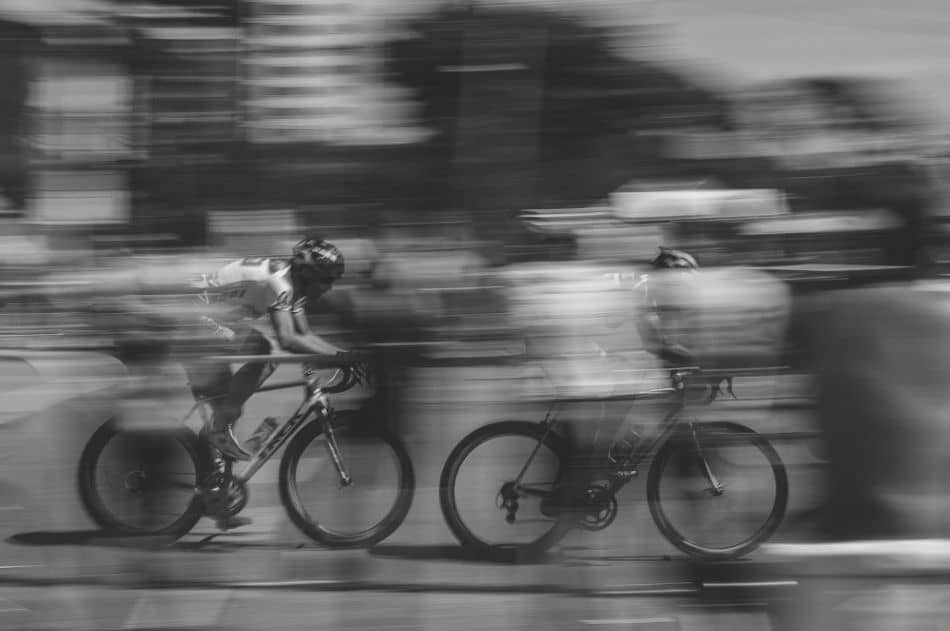
How Can I Improve My Minute Time?
We are often asked how to improve our mile times and recommend various ways.
Upgrade your equipment.
Although much of it comes down to fitness, better equipment will make you faster. The difference between a budget $200 bike and a $5000 bike is a lot. You could see a 3 mph difference between reducing bike weight and better aerodynamics.
Cross-training
A great way to improve your cycling fitness and get faster is cross-training. The term cross-training refers to taking up another sport or style of training to benefit the sport you’re doing. This could be running, strength training, or even swimming for cycling. Many professionals have seen big improvements in fitness through cross-training.
Join a cycling club
In our opinion, a great way to get faster is to join a cycling club. When you ride with other people, you will learn to ride faster, be challenged by other riders, and push yourself further as a team. The speed improvements will be great, and you will make many new friends.
Get a cycling coach
A cycling coach will help you train to get faster. Your body will become conditioned to be faster through structured workouts and varying training intensities. If you are faster, you can cycle a mile much quicker.
Bike fit
Another great way to get faster is to have a bike fit. A bike fit is when you take yourself and your bike to a professional fitter. They will adjust the bike to suit your body shape and size. It will make you more aerodynamic, efficient, comfortable, and even faster.
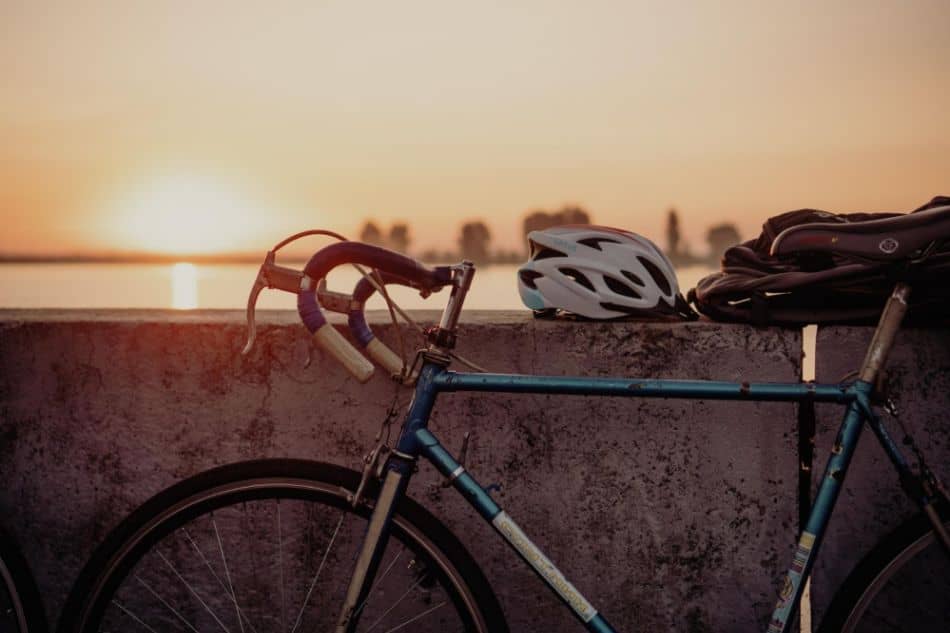
Conclusion
Cycling is an amazing sport, and we are seeing it heavily increase in popularity in recent years. It’s a great way to stay in shape, meet new friends, and even go on holiday. It’s natural to feel competitive when riding. Seeing how quick you are to bike a mile is a great way to test yourself and see if you are improving the more you cycle. Thanks for taking the time to read our article.
Frequently Asked Questions
3 Miles in ten minutes is an excellent speed to be riding a bike. It’s very fast at 18mph.
A strong cyclist could cycle 1.5 miles on a road bike in roughly 5 minutes. There’s a lot of factors which govern speed.
Cycling will help burn calories which can take away fat. You tend to lose it all over, not just on the belly.
Around 10 minutes is a great time to cover two miles on a bike.

I’m Robbie Ferri, a writer from Norfolk in the UK. I love cycling, the gym, and have a huge passion for sharing my stories and knowledge to anyone with the time to read them. My main passion is cycling. I started eight years ago. In that time I have broken world records, cycled all over the world in Ultra Bikepacking races, and am lucky enough to have enjoyed some incredible times on two wheels with some incredible people. I have also worked in a bike shop and with some of the industries leading brands, not just promoting products but designing them too.
Under it all I am just someone very passionate about exploration and living a healthy lifestyle. Everything I do I put 100% into it and feel that life is for living. Never should you have a dull day.

